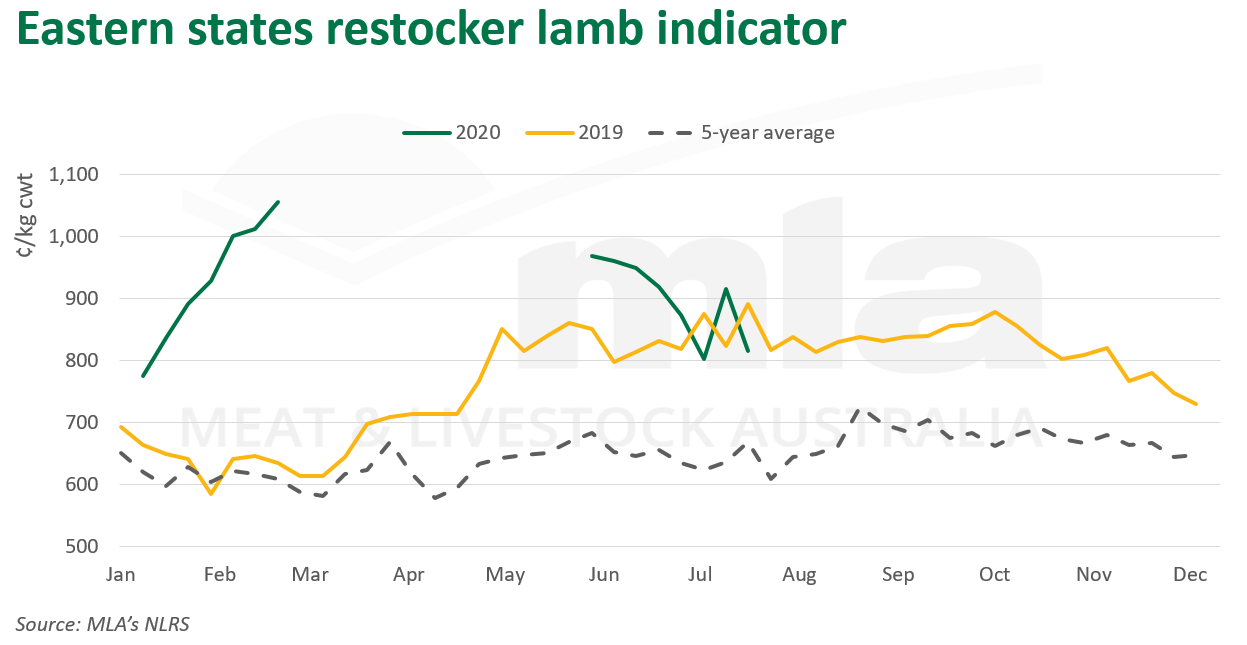Lamb market takes a hit
Key points
- Eastern states indicators have reported significant declines this week across all categories
- Restocker lamb indicator reported largest daily decline since February 2008
- Contraction in processor competition with four processing plants not operating
The latest COVID-19 developments in Victoria have created some disruption to the southern lamb markets. Last week, two processing plants in Victoria temporarily shutdown operations due to cases of COVID-19 detected in the workforce, or as a precaution to carry out deep cleaning.
Currently in Victoria, there are four processing facilities not operating. Importantly, due to the low availability of lambs in the market, additional processing facilities have been able to offset the impact of plant closures, mitigating any backlog.
For the week ending 17 July, national lamb yardings jumped 22% from the previous week to nearly 125,000 head. New South Wales led the increase, with Wagga Wagga reporting an increased lamb yarding of nearly 30,000 head. Lamb yardings in Tasmania also saw a strong increase from week-ago levels, while the remaining states reported declines in lamb throughput at saleyards. Despite the uptick in weekly yardings, numbers are still relatively subdued, which is not uncommon for this time of year as processors often take the opportunity to initiate maintenance work during the slowdown period.
On Tuesday 21 July, the eastern states restocker lamb indicator fell 91¢ to 815¢/kg carcase weight (cwt), the largest daily decline since February 2008. Eastern trade and heavy lamb indicators also reported significant declines, back 20¢ and 25¢ to 780¢/kg cwt and 730¢/kg cwt, respectively.

Recent weeks have seen a shift in supply availability in the lamb market, as a relative increase in supply has resulted in prices falling from record highs earlier in the year. The temporary shutdown of multiple processing facilities in Victoria has resulted in competition in the southern store market falling away, pulling prices down across all categories. Additionally, the subdued overseas demand for lamb has seen export buyers not participate in the bidding, adding further downward pressure. On ground reports at southern selling centres have alluded to the challenges in purchasing stock from interstate saleyards due to interstate travel restrictions surrounding COVID-19.
© Meat & Livestock Australia Limited, 2020



